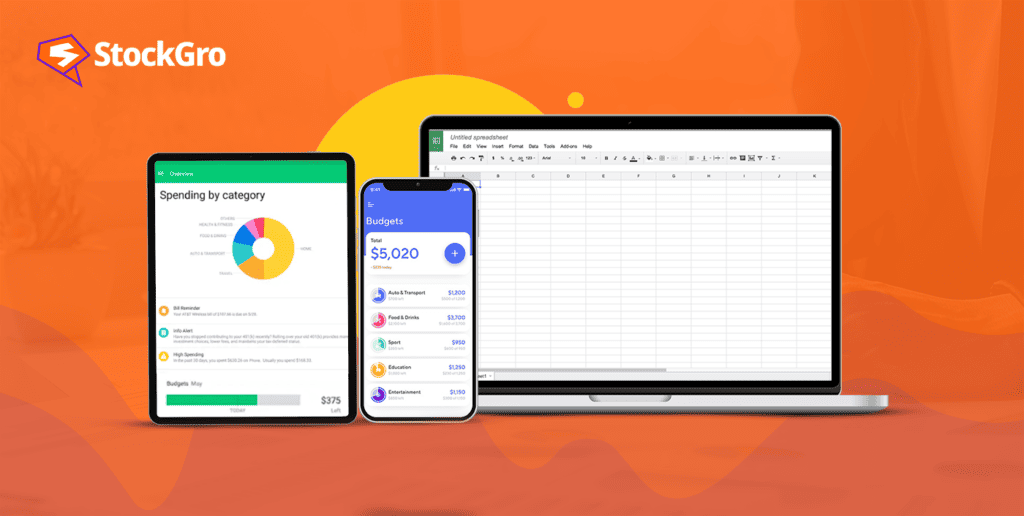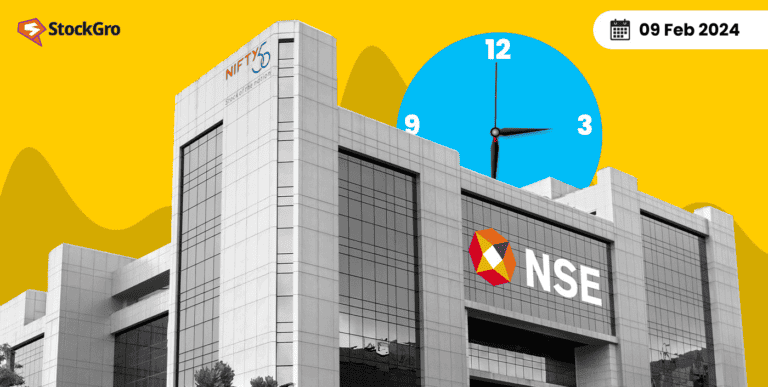
What do you need to sustain your life? Well, for the most part, it is money. To manage money appropriately and efficiently, a budget plays an important role. With a well-planned budget in place, you can be assured that your income inflow is enough to offset your expenses.
While you could say that budgeting is no rocket science, let us warn you that you need to find the perfect budgeting technique that fits your unique financial situation. In this article, we will go through some of the most used advanced budgeting techniques for individuals by taking inspiration from the pros.
Why should you follow a budgeting technique?
If you want to get your finances organised, there’s no alternative to budgeting. And let’s be honest: most people have really bad spending habits. They want the best of everything, without paying attention to savings.
Getting into the habit of following budgeting strategies will put an end to that, ensuring you only spend what you can afford. Budget tracking also creates stability in your finances and helps you with financial discipline. A budget lends you a stronger financial backbone for both the short term and the long term by undertaking expense control.
A proper budgeting technique keeps you prepared for emergencies. Life is unpredictable. You never know what is around the corners, be it a medical emergency, an expensive repair, or theft. Budgeting ensures that you have enough in your emergency fund to take care of unforeseen expenses.
Also read: How to live more with less: The art of mindful consumption
Top 7 advanced budgeting techniques for you
- Zero-based budgeting
Developed by Peter Pyhrr, Zero-Based Budgeting, or ZBB, is a budgeting technique that requires all expenses to be justified from scratch for each new period or year, rather than simply adjusting the previous budget (if you have one in place).
IBM defines ZBB as “ a strategic budgeting approach that mandates a fresh evaluation of all expenses during each budgeting cycle.” Zero-based budgeting (ZBB) stands out as an exceptionally effective finance planning tool.
It enables you to pinpoint and get rid of unnecessary costs, uphold spending control, and direct your focus towards high-profit investments. This helps in expense management, too.
Pros:
- ZBB provides clarity on priorities and aligns with your objectives.
- This technique questions unsupported expenditures from previous years and justifies single-year expenses.
- Frequent monitoring ensures accountability throughout the year.
- ZBB encourages one to justify expenditures, leading to better financial planning
Cons:
- ZBB is undeniably more time-consuming than traditional budgeting methods.
- ZBB implementation may prove to be unnecessary for simple budgeting.
- Incremental budgeting
Incremental budgeting follows the conventional approach of basing the budget on the current period’s budget, and then adding incremental amounts for the new period. These increments account for factors including inflation and cost adjustments.
This differs from the zero-based budgeting approach, where each cost must be thoroughly justified. In incremental budgeting, costs are adjusted for the upcoming period without necessarily scrutinising and justifying each one individually. However, expenses and your income are still subject to scrutiny.
Pros:
- Simply put, Incremental Budgeting is really simple. Its implementation is relatively easier, even for novices without extensive prior knowledge of budgeting techniques.
- Prior accounting expertise is not a requirement.
- In incremental budgeting, relying on figures from previous budget periods helps maintain a level of consistency and stability in the budgets over time.
- Incremental budgeting is not time-consuming.
Cons:
- Incremental budgeting assumes the reliability of your previous budget, otherwise, it fails.
- This method neglects uncertain circumstances or variables.
- This method discourages increased spending because it maintains the same budget as the previous year.
- 50/30/20 Budgeting
Advocated by U.S. Senator Elizabeth Warren and also Amelia Tyagi, the 50/30/20 rule in finance suggests that you should allocate 50% of your total income to your needs, 30% to wants, and the rest 20% to savings.
Also read: How to achieve financial freedom and live your best life?/
By breaking up your income into three distinct divisions, this budgeting technique also aims to maintain and even improve your overall quality of life, while at the same, compelling you to allocate money to savings religiously.
Pros:
- This budgeting technique is a great starting point to get into the habit of budgeting.
- The 50/30/20 technique provides a baseline to assist in determining the allocation of your finances.
- The 50/30/20 technique also offers flexibility. The 50/30/20 rule can be adapted to align with your specific financial circumstances and objectives.
- It is quick and simple to implement
Cons:
- The 50/30/20 technique often doesn’t work for everyone.
- This technique blatantly overlooks irregular expenses such as car repairs or medical bills that can always disrupt your budget
- Households with low incomes, particularly in costly urban areas, may need to allocate more than 50% of their post-tax earnings to cover necessities.
- Envelope Budgeting
The envelope budgeting method, popularised by personal finance author Dave Ramsey, involves dividing your take-home pay into spending categories such as rent, groceries, etc., assigning an envelope to each category, and allocating the planned cash amount into the respective envelopes.
This technique categorises variable expenses using both physical and digital envelopes. Once the funds allocated to a category are depleted, spending stops until additional funds are added.
Pros:
- This budgeting technique forces you to pre-plan your expenditures before the month starts and also encourages a realistic evaluation of your past income spending habits.
- It encourages you to avoid unnecessary expenses.
- It allows you to establish limits on discretionary spending categories.
- Envelope budgeting Simplifies saving by avoiding the need to charge purchases and worry about them afterwards.
Cons:
- Envelope budgeting is time-consuming.
- Unless you use a digital wallet, you would need to carry many envelopes of cash around with you, which is just impractical.
- You lose the ease of accessing credit card history, and also credit card rewards, by relying entirely on cash.
Also read: Elevate your budget game: Mindful spending for the ultimate balance
- The Weekly Allowance approach
Weekly allowance budgeting is basically setting yourself a fixed amount of money to spend each week. It contrasts with traditional monthly budgeting, which typically examines finances and spending allowances on a monthly basis.
The weekly allowance strategy is most effective when combined with methods such as zero-based budgeting. This is because the weekly allowance covers only discretionary spending and it requires another approach to ensure essential expenses are covered.
Pros:
- This allowance approach enables a structured framework for managing discretionary spending
- It encourages better control over finances.
- Weekly allowances encourage you to be more conscious of your spending habits and also to prioritise purchases.
- The weekly strategy also allows adjustments in spending patterns every week
Cons:
- Keeping track of multiple spending categories within a weekly allowance system becomes quite challenging and requires careful planning and tracking.
- The weekly allocation can often be restrictive, especially if unexpected expenses arise
- This method does not take into account irregular expenses such as monthly bills.
- Rolling budgeting
Rolling budgeting, or Continuous budgeting is a budgeting method that goes through regular updates. The method involves progressively extending the current budget year by incorporating a new budgeting period as the previous one ends.
A rolling budget always looks forward, meaning you’re never starting from scratch, as opposed to static budget models that place you at zero at the beginning of the year.
Pros:
- Better planning is possible by adjusting short-term goals.
- Rolling budgets offer more flexibility by providing short-term context. This is unlike fixed budgets established months in advance.
- Rolling the budget doesn’t demand additional time since it’s essentially an extension of the previous budget with essential adjustments.
Cons:
- A rolling budget requires notably more time to prepare and revise and is quite difficult to maintain.
- Continuous attention and resources are needed for rolling budgets.
- It might hinder you from fulfilling your long-term financial goals.
- Activity-based Budgeting
Investopedia defines Activity-based budgeting, or ABB, as “a system that records, researches, and analyses activities that lead to costs for a company. Every activity in an organisation that incurs a cost is scrutinised for potential ways to create efficiencies. Budgets are then developed based on these results.”
When creating a budget, ABB does not factor in historical costs. Activity-based saving techniques are mostly suited for businesses and organisations and might end up being too complicated for individual use.
Pros:
- ABB is quite transparent.
- ABB also allows a deeper breakdown of expenses.
- ABB focuses on more strategic capital allocation for profitability optimization.
Cons:
- ABB is more time-consuming compared to other budgeting methods. It requires all transactions to be precisely recorded.
- ABB is a slower budgeting process.
- ABB is mostly directed towards short-term goals.
Conclusion
Without a budget, you are always at the risk of spending more than you can bring in. Finding the right budgeting technique that fits in perfectly with your exact financial situation will no doubt take some trial and error. But in something as sensitive as budgeting, it is better to keep trying until you find the perfect method that works for you.
For more money-saving tips and ways to enlarge and diversify your portfolio, visit StockGro.

